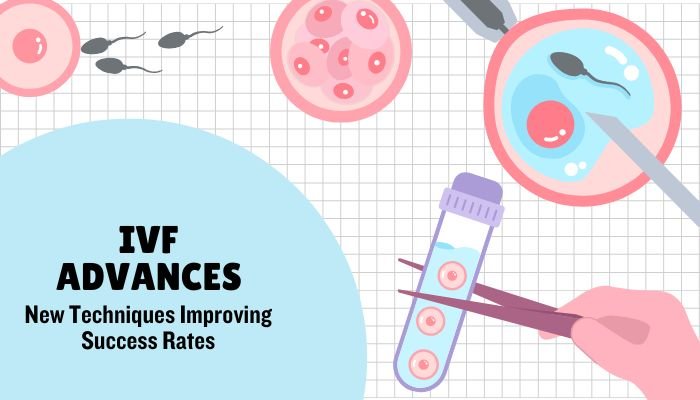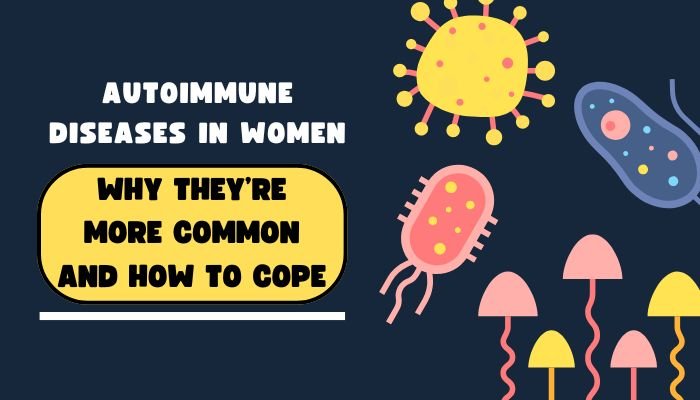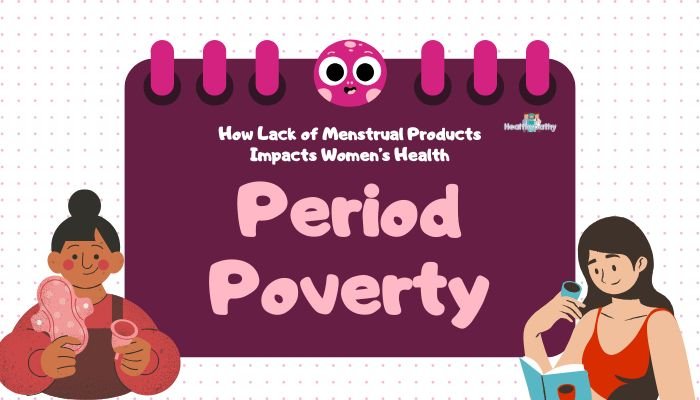Introduction
In vitro fertilization (IVF) has reshaped fertility medicine by offering a structured way to fertilize eggs outside the body and then transfer resulting embryos to the uterus. Initially developed for couples who could not conceive due to blocked fallopian tubes, IVF now helps many people overcome diverse reproductive challenges.
Over the years, the process evolved from straightforward fertilization in a dish into a precise, data-driven approach. Today, doctors, embryologists, and researchers continuously refine every step—ranging from ovarian stimulation to embryo transfer—to boost success rates and minimize complications.
This article explores key innovations that improve embryo quality, enhance diagnostic accuracy, and increase the likelihood of a healthy pregnancy. It explains how advanced screening tools, refined lab procedures, and personalized approaches raise the odds of success per cycle.
The article also discusses efforts to reduce multiple pregnancies, handle male factor infertility, and integrate supportive care. By understanding these modern IVF developments, prospective parents can make better-informed decisions and tap into new treatment possibilities.
Traditional IVF Overview
Before examining new advancements, it helps to grasp the fundamentals of IVF. The classic protocol involves several standard steps:
- Ovarian Stimulation: Fertility medications encourage the ovaries to produce multiple mature eggs during a single cycle, rather than just one.
- Egg Retrieval: Doctors use an ultrasound-guided needle to collect eggs from follicles in the ovaries.
- Fertilization in the Lab: Collected eggs are placed in a dish with sperm or undergo intracytoplasmic sperm injection (ICSI), where one sperm is injected into each egg.
- Embryo Development: Fertilized eggs (now embryos) grow in specialized culture media, typically for several days.
- Embryo Transfer: One or more selected embryos are transferred to the uterine cavity. Any remaining viable embryos can be frozen.
- Pregnancy Testing: Around two weeks post-transfer, a blood test checks for the presence of the pregnancy hormone beta-hCG.
Despite these steps remaining a framework, each component has matured significantly. Labs now employ advanced imaging, powerful genetic testing, and advanced culture protocols. These refinements boost embryo viability while reducing some of the risks associated with fertility treatment.
Improved Ovarian Stimulation Protocols
Tailored Medication Plans
Traditionally, many clinics used a standard “long protocol” or “short protocol” for all patients. Now, specialists customize stimulation to each woman’s ovarian reserve and prior responses. Key factors include:
- Age and Ovarian Reserve: Women with strong reserves might need gentler stimulation to avoid excessive follicle growth, while those with diminished reserves might require more aggressive protocols or different medication combinations.
- Hormone Testing: Anti-Müllerian hormone (AMH) and follicle-stimulating hormone (FSH) levels guide medication doses.
- Past Cycles: If a patient previously showed low egg yield or poor embryo quality, doctors tweak the regimen.
By personalizing drug selection and dosages, clinics aim to find the “sweet spot” that leads to multiple mature eggs without triggering serious complications like ovarian hyperstimulation syndrome (OHSS).
GnRH Agonist Triggering
For many years, clinics used hCG (human chorionic gonadotropin) to finalize egg maturation (the “trigger shot”). But high-dose hCG can raise the risk of OHSS. Now, a GnRH agonist trigger is an option for certain groups:
- Fast Clearance: A GnRH agonist leaves the bloodstream quicker than hCG, lowering the chance of dangerous fluid shifts that define OHSS.
- Freeze-All Strategy: If risk for OHSS remains high, doctors may retrieve eggs and freeze all embryos, postponing transfer until the patient’s hormones normalize.
This strategy balances robust egg maturation with better safety. Many clinics adopt it for women at risk of overresponse, such as those with polycystic ovary syndrome (PCOS).
Mild and Natural Cycle IVF
Not everyone is comfortable with intense stimulation. Mild IVF uses lower-dose drugs to reduce medication side effects and cost. Natural cycle IVF involves no stimulation medication—collecting the single dominant follicle produced each month. These approaches are appealing for:
- Women Concerned About Drug Reactions: People with certain medical conditions might avoid large hormone doses.
- Simplified Logistics: Fewer injections and monitoring visits help with scheduling.
- Lower Cost: Less medication reduces expenses, though success rates per cycle can be slightly lower.
Modern labs offset the fewer eggs by employing refined fertilization and embryo culture methods, yielding fair pregnancy rates in selected cases.
Laboratory Innovations
Time-Lapse Embryo Monitoring
Classic IVF labs remove embryos from incubators once or twice daily to check cell divisions under a microscope. This exposes embryos to temperature changes and requires staff time. Now, time-lapse technology uses incubators with built-in cameras that capture images every few minutes:
- Constant Observation: Embryologists watch dividing cells without disturbing them, gaining insight into timing and symmetry of division.
- Improved Selection: Morphokinetic data (timing of cell cleavages) correlate with embryo viability. Potentially viable embryos can be identified more accurately.
- Less Handling: Reduced exposure to external environments may yield fewer disruptions to growth.
Many clinics find time-lapse monitoring helpful, although it can add cost. Some meta-analyses suggest marginally better implantation rates using time-lapse data. Others believe results vary across clinics, dependent on embryologist training and the software’s predictive algorithms.
Refined Culture Media
Developing embryos need precise levels of nutrients, proteins, and a stable pH. Labs once used simple media with minimal ingredients. Modern media:
- Stage-Specific Formulations: Embryos in early cleavage stages require a different nutrient balance than blastocyst-stage embryos. Switching media can match the embryo’s evolving metabolic needs.
- Antioxidants and Growth Factors: Some labs experiment with additives that could benefit embryo quality. Evidence is mixed, but ongoing research might fine-tune which extras truly help.
- Low Oxygen Tension: An oxygen level of about 5% in incubators mirrors the fallopian tube, potentially aiding growth. Lower oxygen tension can reduce oxidative stress for sensitive cells.
Microfluidics
Microfluidic devices represent an emerging trend. Tiny channels on specialized chips can control fluid flow around eggs and sperm:
- Precision Sperm Selection: Microfluidic sorting can isolate the most motile sperm with minimal damage.
- Reduced Shear Stress: Gentle flows may protect cells from turbulence.
- Potential Automated Platforms: In the future, entire embryology processes—fertilization, culture, and analysis—might be integrated on a “lab-on-a-chip” system.
Although microfluidics remain primarily in research phases, early data indicate possible improvements in fertilization efficiency and embryo health.
Biopsy Techniques
Preimplantation genetic testing (PGT) requires analyzing genetic material from an embryo. Older approaches took cells from day-3 embryos (cleavage stage), which held higher risks of embryo damage. A modern approach obtains trophectoderm cells at the blastocyst stage:
- More Cells, Less Risk: By day 5 or 6, the embryo has hundreds of cells. Biopsying a small cluster from the outer layer (trophectoderm) spares the inner cell mass, which forms the fetus.
- Accurate Genetic Snapshots: PGT identifies aneuploidies or single-gene issues without significant harm.
- Better Outcomes: Embryos flagged as chromosomally normal (euploid) have a higher chance of successful implantation.
Clinics have refined the technique to minimize harm, though it requires skilled embryologists and specialized labs.
Genetic and Screening Advances
Preimplantation Genetic Testing for Aneuploidy (PGT-A)
Aneuploidies—chromosome imbalances—cause many miscarriages. PGT-A checks if an embryo carries the correct chromosome count:
- Lower Miscarriage Risk: Transferring euploid embryos can cut miscarriage rates, particularly for older women.
- Fewer Multiple Embryo Transfers: Doctors can feel more confident transferring a single euploid embryo, avoiding twins or triplets.
- Cost vs. Benefit: Some couples need to weigh the expense of testing multiple embryos. Not all clinics recommend universal PGT-A, as results must be cautiously interpreted.
PGT for Monogenic Diseases (PGT-M)
Families at risk of passing on conditions (e.g., cystic fibrosis, thalassemia) can identify unaffected embryos. Genetic specialists design custom probes that detect harmful mutations:
- Healthy Embryo Selection: PGT-M helps couples avoid passing genetic disorders.
- Limited to Known Mutations: If new or unknown mutations exist, standard PGT-M may not catch them.
Noninvasive Testing
Some labs trial the analysis of cell-free DNA in spent culture media, aiming to bypass embryo biopsy. Early data are encouraging, but reliability issues linger. If validated, this method would reduce invasiveness, preserving embryo integrity. Studies continue to refine protocols, working toward robust data accuracy.
Personalized Embryo Transfer Windows
Even a chromosomally normal embryo may fail if transferred when the uterus is not receptive. Endometrial receptivity analysis (ERA) examines gene expression patterns to identify each woman’s optimal implantation window:
- Solves Possible “Timing Mismatch”: After repeated implantation failures, doctors might shift embryo transfer by a day if ERA suggests a displaced window.
- Controversies Over Efficacy: Research yields mixed outcomes. Some see improved success after adjusting timing, while others question the universal need for ERA.
AI-Assisted Embryo Selection
Machine Learning Algorithms
AI has surfaced in IVF clinics to interpret time-lapse images or morphological data:
- Enhanced Objectivity: Unlike embryologists who rely on visual grading, AI can compute subtle metrics.
- Large Datasets: Machine learning thrives on extensive archives of embryo pictures and known outcomes. Over time, the software “learns” which traits correlate with a live birth.
- Clinical Adoption: Some centers offer optional AI scoring. Although initial trials show promise, uniform protocols do not exist, and long-term data remain limited.
Potential Benefits
- Consistency: Fewer discrepancies between staff interpretations.
- Early Predictions: Certain morphological events might predict embryo viability sooner.
- Better Single-Embryo Transfer: More confidence in picking the embryo with the best prognosis.
Caveats
- Need for More Validation: AI models might overfit or fail to generalize if training data are narrow or from one population.
- Cost and Complexity: Implementation requires specialized hardware, software licensing, and staff training.
- Ethical Implications: Some worry about over-reliance on algorithms, highlighting the need for a careful approach.
Innovations in Sperm Analysis and Retrieval
Improved Sperm Selection
Intracytoplasmic sperm injection (ICSI) helps address male factor infertility. However, picking the best sperm remains complex. Techniques that refine sperm selection:
- Magnetic Activated Cell Sorting (MACS): Uses magnetic beads to remove sperm with apoptosis markers.
- Microfluidic Chips: Let motile, structurally intact sperm migrate upward through a channel, separating them from debris or immotile cells.
- High-Magnification ICSI (IMSI): Uses an advanced microscope to examine sperm morphology at very high magnification before injection.
TESE and Micro-TESE
For men with azoospermia (no sperm in ejaculate), testicular sperm extraction (TESE) can find pockets of sperm in testicular tissue. Micro-TESE is a refined surgical method:
- Microsurgical Guidance: Identifies tubules more likely to yield sperm while minimizing tissue damage.
- Combining with ICSI: If viable sperm are extracted, injection into eggs can result in fertilization.
- Sensitive Tissue Handling: Skilled surgeons reduce harm, preserving testicular function.
These steps expand options for men who previously would have needed donor sperm.
Optimizing Embryo Transfer and Reducing Multiples
Single Embryo Transfer (SET) Policies
Doctors and health organizations often advise SET if an embryo tests euploid or if time-lapse data suggests high implant potential. Benefits include:
- Lower Twin/Triplet Rate: Multiple pregnancies carry risks such as preterm birth and preeclampsia.
- Comparable Cumulative Success: Patients can freeze surplus embryos, undergoing subsequent transfers if the first attempt is not successful.
By contrast, older approaches transferring two or three embryos simultaneously might raise immediate success rates but also cause a jump in perinatal complications. Single embryo transfer, plus advanced embryo screening, strikes a safer balance.
Freeze-All Techniques
Sometimes fresh embryo transfers occur in a cycle with high estradiol or progesterone levels, potentially compromising the endometrium. Clinics may opt to freeze all embryos:
- Separates Stimulation from Transfer: The woman recovers, and hormone levels return to baseline.
- Better Endometrial Receptivity: FET (frozen embryo transfer) cycles often yield stable hormone patterns.
- OHSS Avoidance: Women prone to hyperstimulation might skip a fresh transfer and freeze embryos for a subsequent cycle, limiting complications.
Improvements in vitrification ensure that survival rates for frozen-thawed embryos are now high, prompting more freeze-all strategies when needed.
Adjunct Therapies and Holistic Care
Reproductive Immunology Support
Controversies exist around how immune factors affect implantation. Some clinics recommend treatments like low-dose steroids, intravenous immunoglobulin, or intralipid infusions for repeated implantation failures. Evidence remains mixed, but the approach is an evolving field:
- Possible Benefits for Autoimmune Reactions: In cases where the uterus might reject the embryo due to immune response.
- No Universal Protocols: Some doctors remain cautious, citing insufficient large-scale proof.
Uterine Cavity Assessments
A healthy uterine environment is crucial for embryo attachment:
- Hysteroscopy: Examining the uterus with a small camera can find and correct fibroids, polyps, or adhesions.
- Saline Sonography: Fluid is injected into the uterus during an ultrasound to detect irregularities.
Addressing any discovered anomalies fosters better conditions for the embryo.
Psychological Support and Stress Management
Fertility treatments often spark stress, anxiety, or disappointment. Clinics increasingly integrate counseling, peer support groups, or complementary therapies:
- Relaxation Techniques: Breathing exercises, meditation, or yoga might reduce cortisol levels and bolster emotional resilience.
- Counseling Sessions: Helps couples set realistic expectations and develop coping tools for unsuccessful cycles or uncertain outcomes.
While the direct effect of stress management on pregnancy rates remains debated, mental well-being fosters perseverance through multiple IVF attempts if needed.
Expanding Access and Safety
Cost and Insurance
High IVF costs can deter many. Some regions or employers offer coverage for fertility treatments, though policies vary widely. Innovations that reduce lab time or adopt mild stimulation might lower costs somewhat. There is an ongoing push to classify infertility as a medical condition rather than a voluntary procedure, which could expand insurance coverage.
Ethical and Regulatory Factors
Each country sets different regulations around embryo research, genetic editing, and fertility treatments. Researchers and clinicians must navigate guidelines that define how advanced these technologies can be in everyday practice. Ensuring patient autonomy, privacy, and clear informed consent is paramount.
Safer Practices for At-Risk Patients
Patients with medical issues—like heart conditions or obesity—need specialized monitoring. Some clinics form multidisciplinary teams (e.g., endocrinology, anesthesiology, cardiology) to handle complexities:
- Custom Stimulation Protocols for those with metabolic complications.
- Detailed Risk Assessments before sedation.
- Post-Retrieval Monitoring to detect any adverse effects early.
This integrated approach aims to preserve safety without sacrificing success.
Future Prospects in IVF
Noninvasive Genetic Screening
Researchers continue perfecting embryo screening using DNA fragments in the culture medium. If it proves reliably accurate, this technique may eventually replace biopsy-based PGT. Less handling could cut lab costs and reduce embryo stress.
CRISPR Gene Editing
Gene editing remains extremely controversial. Preclinical experiments show CRISPR’s capacity to fix certain mutations. Yet ethical, legal, and safety concerns curb mainstream adoption. Even so, in decades to come, regulated forms of gene editing might prevent severe monogenic disorders if society deems it acceptable.
Automation and Robotic Systems
Machine-driven labs could automate egg retrieval, fertilization, and early embryo culture. Robotics might reduce human error. Microfluidics and advanced imaging sensors could integrate into a closed system with minimal staff intervention. While feasible, clinical acceptance requires thorough safety validation.
Advanced Cryoprotectants
Current vitrification is highly effective, but scientists hope to refine cryoprotectants further, decreasing cellular stress. If the freezing and thawing process become even gentler, embryo survival rates could approach near-perfect levels, further encouraging freeze-all and egg freezing strategies.
Conclusion
IVF has come a long way since the first successful procedure over four decades ago. Through breakthroughs like preimplantation genetic testing, time-lapse imaging, and refined culture environments, fertility specialists can better evaluate embryos, reduce miscarriage risk, and improve overall pregnancy outcomes. Personalized stimulation regimens, advanced sperm selection, and expansions in embryo freezing highlight the drive to optimize every stage of IVF.
Ongoing research aims to make IVF safer, more accessible, and more precise. Gene editing, microfluidic technology, and AI-driven embryo selection point to an era where each cycle’s success rate might rise further. Meanwhile, practitioners emphasize single embryo transfer and supportive care to limit complications and maintain emotional well-being.
Despite these impressive achievements, IVF remains a multifaceted journey for many patients. There are no absolute guarantees, but advanced procedures and thoughtful clinical management offer hope to those who once faced seemingly insurmountable fertility barriers. As the field continues to refine its techniques, families gain improved opportunities to realize their dream of welcoming a child.
References
- Steptoe PC, Edwards RG. Reimplantation of a human embryo with subsequent tubal pregnancy. Lancet. 1976;1(7965):880–882.
- Palermo G, Joris H, Devroey P, Van Steirteghem AC. Intracytoplasmic sperm injection: a novel treatment for all forms of male factor infertility. Hum Reprod. 1992;7(12):1992–1997.
- Gardner DK, Schoolcraft WB. Culture and transfer of human blastocysts. Curr Opin Obstet Gynecol. 1999;11(3):307–311.
- Racowsky C, Martins WP, Jackson KV. The search for the best embryo: a multicenter randomized trial of embryo culture media. Fertil Steril. 2015;103(6):1486–1493.
- Forman EJ, Hong KH, Ferry KM, Scott RT Jr. Single euploid embryo transfer: a new standard of care. Fertil Steril. 2014;102(3):399–401.
- Min JK, Hughes E, Young D, Gysler M, Hemmings R, Cheung AP. Elective single embryo transfer following in vitro fertilization. J Obstet Gynaecol Can. 2010;32(4):363–377.
- Cimadomo D, Mariani M, Pasquini L, et al. The impact of biopsy on human embryo developmental potential during IVF: a systematic review. J Assist Reprod Genet. 2018;35(5):683–698.
- Yuan X, Saravelos SH, Wang Q, Xu Y, Li TC, Zhou C. Endometrial receptivity test (ERA) in clinical practice: a systematic review and meta-analysis. J Assist Reprod Genet. 2020;37(1):21–28.
- Capalbo A, Ubaldi FM. Nothing as practical as a good theory: can we help patients produce better eggs, or can we produce better embryos? Hum Reprod. 2021;36(3):644–646.
- Basile N, Vime P, Florensa M, Aparicio Ruiz B, García-Velasco JA. Artificial intelligence in the IVF lab: to trust or not to trust? Hum Reprod. 2020;35(7):1513–1519.
- Neri QV, Rosenwaks Z. In vitro fertilization in the era of genomics and epigenomics. Fertil Steril. 2018;109(1):6–8.
- Baart E, Martini E, Eijkemans M, et al. Microarray analysis reveals strong gene expression changes during early in vitro development of the human embryo. Mol Hum Reprod. 2022;28(2):gaab096.







